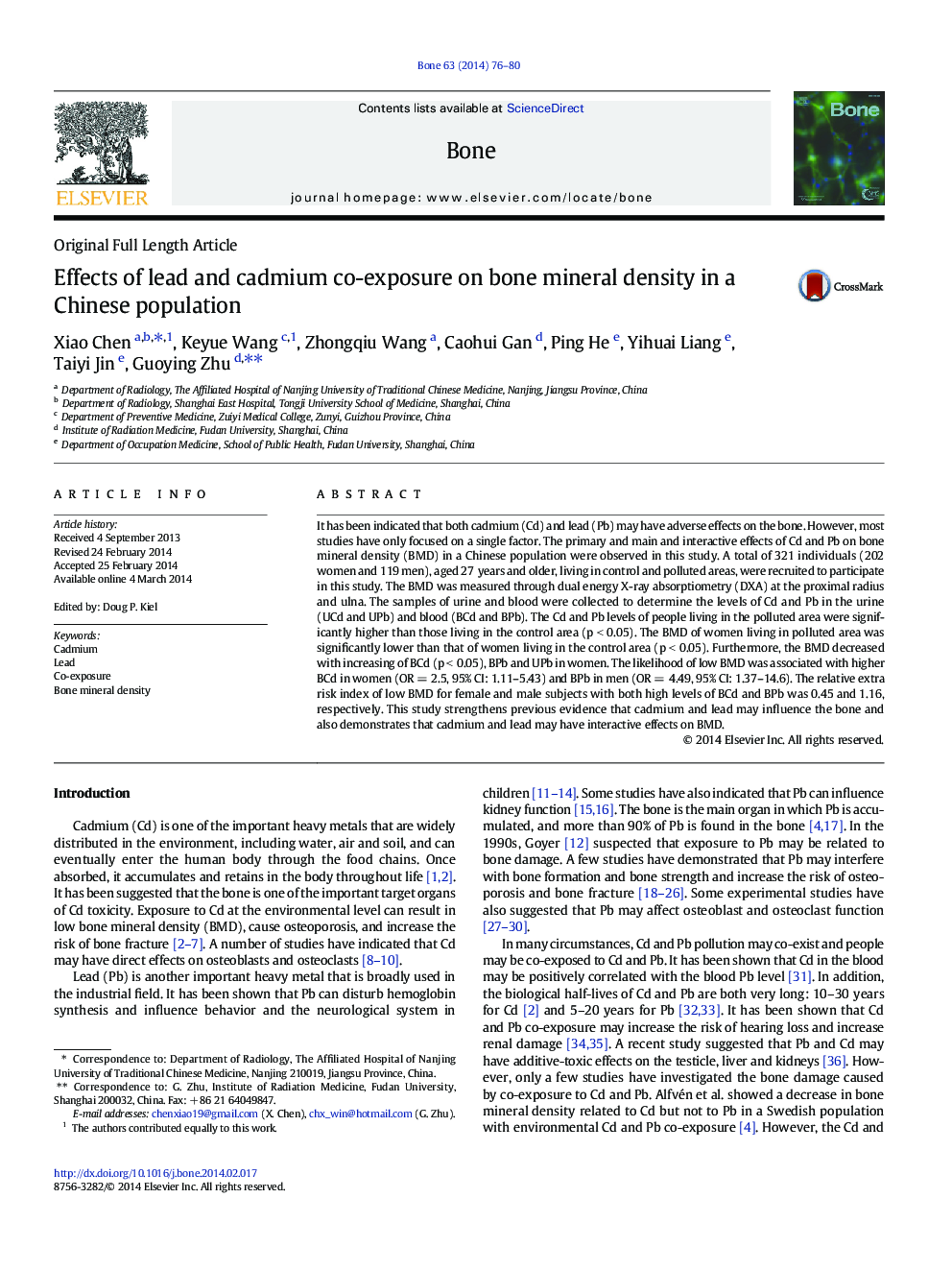| Article ID | Journal | Published Year | Pages | File Type |
|---|---|---|---|---|
| 5890382 | Bone | 2014 | 5 Pages |
Abstract
It has been indicated that both cadmium (Cd) and lead (Pb) may have adverse effects on the bone. However, most studies have only focused on a single factor. The primary and main and interactive effects of Cd and Pb on bone mineral density (BMD) in a Chinese population were observed in this study. A total of 321 individuals (202 women and 119 men), aged 27 years and older, living in control and polluted areas, were recruited to participate in this study. The BMD was measured through dual energy X-ray absorptiometry (DXA) at the proximal radius and ulna. The samples of urine and blood were collected to determine the levels of Cd and Pb in the urine (UCd and UPb) and blood (BCd and BPb). The Cd and Pb levels of people living in the polluted area were significantly higher than those living in the control area (p < 0.05). The BMD of women living in polluted area was significantly lower than that of women living in the control area (p < 0.05). Furthermore, the BMD decreased with increasing of BCd (p < 0.05), BPb and UPb in women. The likelihood of low BMD was associated with higher BCd in women (OR = 2.5, 95% CI: 1.11-5.43) and BPb in men (OR = 4.49, 95% CI: 1.37-14.6). The relative extra risk index of low BMD for female and male subjects with both high levels of BCd and BPb was 0.45 and 1.16, respectively. This study strengthens previous evidence that cadmium and lead may influence the bone and also demonstrates that cadmium and lead may have interactive effects on BMD.
Related Topics
Life Sciences
Biochemistry, Genetics and Molecular Biology
Developmental Biology
Authors
Xiao Chen, Keyue Wang, Zhongqiu Wang, Caohui Gan, Ping He, Yihuai Liang, Taiyi Jin, Guoying Zhu,
